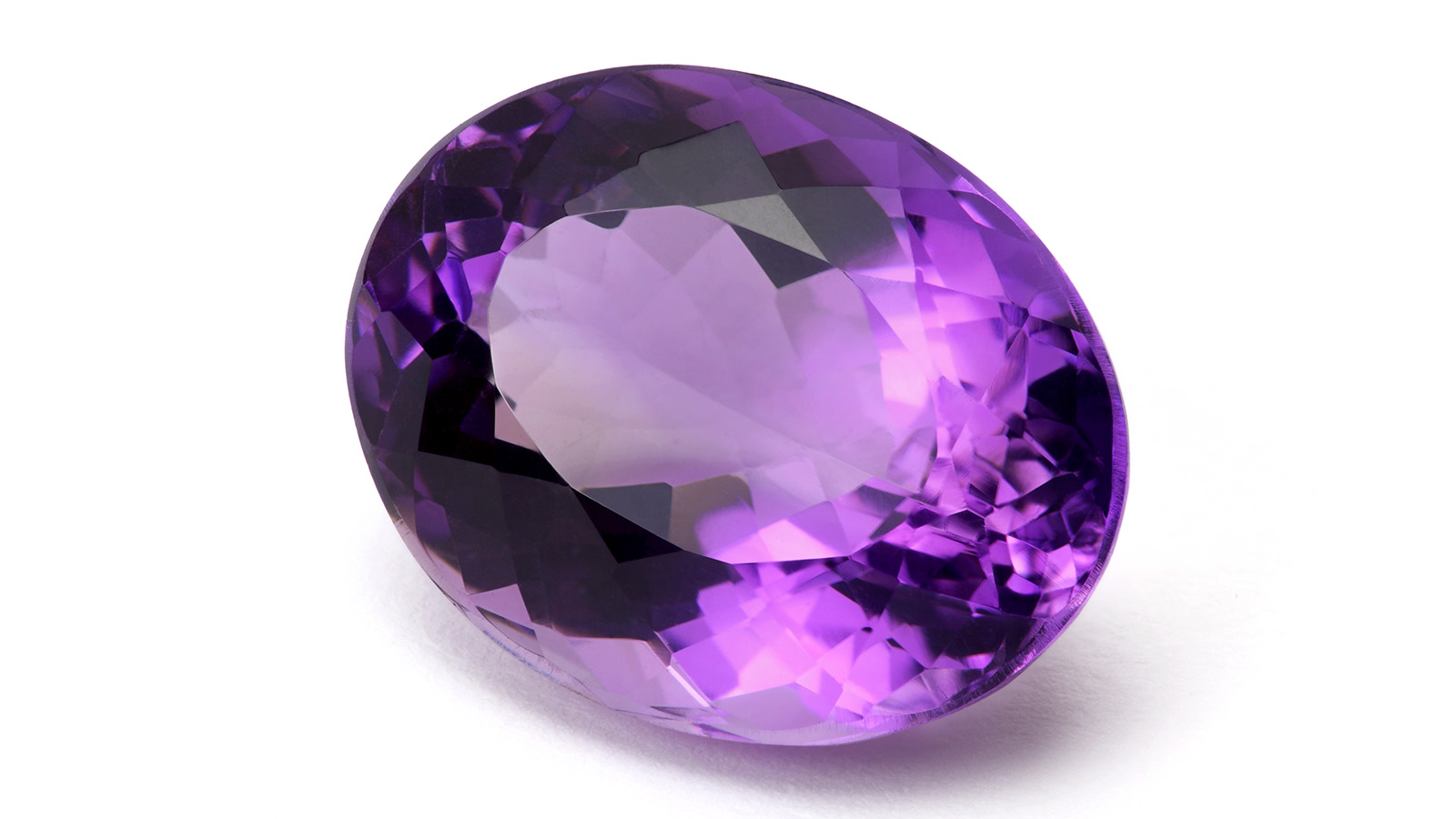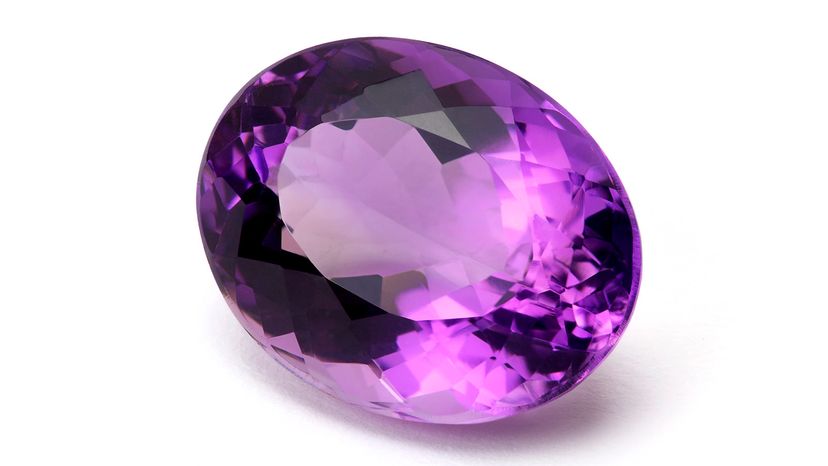
Purple gemstones aren’t just for royalty, but their regal vibe is hard to ignore. From ancient talismans to modern crystal “therapy,” purple stones have long held a prized place in our jewelry collections and cultural traditions.
What makes a gemstone purple? It usually comes down to trace elements — tiny bits of other minerals that tweak the stone’s natural color.
Depending on its chemical makeup and viewing angle, a purple gem can show different hues like pale lilac, deep violet, or even a flash of blue-green.
1. Purple Amethyst
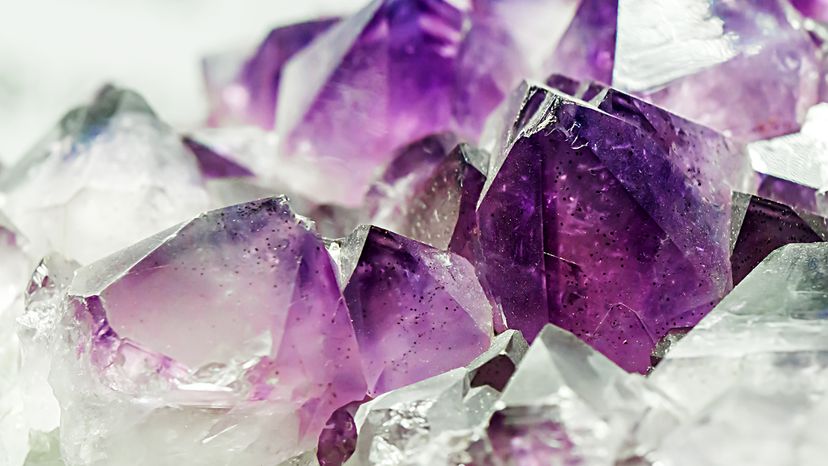
The most popular purple gemstone is amethyst, a type of quartz crystal. Its name comes from the Greek word “amethystos,” meaning “not drunk,” because people once believed it could prevent intoxication.
With a Mohs scale rating of 7, it’s tough enough for daily wear and makes a standout February birthstone. Its purple color varies with heat treatments and exposure to ultraviolet light.
2. Purple Sapphire
Not all sapphires are blue. Purple sapphires get their violetish-purple hue from trace elements like vanadium. These stones often display a uniform color with strong fluorescence under ultraviolet light.
They score a solid 9 on the Mohs scale, making them a durable and luxurious choice for purple gemstone jewelry.
3. Lavender Jade
Lavender jade is the only jadeite variety with a natural purple hue. Typically found in Myanmar, this gem rock is extremely rare and valued for its unique color and semitransparent appearance.
It’s been used for centuries in carvings and jewelry, and some believe it holds healing properties that promote mental clarity and relieve stress (although no scientific evidence supports such claims).
4. Purple Spinel
Often mistaken for sapphire, purple spinel offers a striking color and is prized by collectors. Some specimens even exhibit the alexandrite effect — shifting colors depending on the light source, like incandescent light versus daylight.
Spinel’s chemical makeup makes it stable and hard, perfect for daily wear.
5. Purple Fluorite
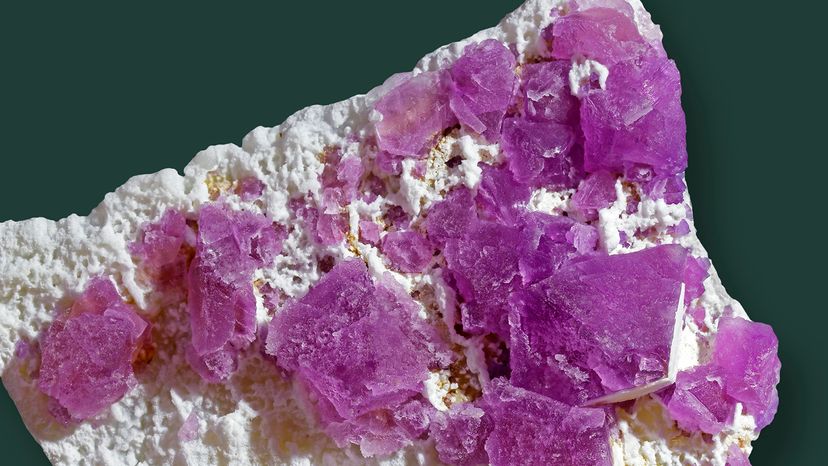
This lapidary rock is a go-to for collectors due to its many beautiful colors and strong fluorescence. Purple fluorite is relatively soft (Mohs scale 4), so it’s better suited for pendants than rings.
Still, its vibrant hues and clarity under different lighting make it a showstopper.
6. Purple Agate
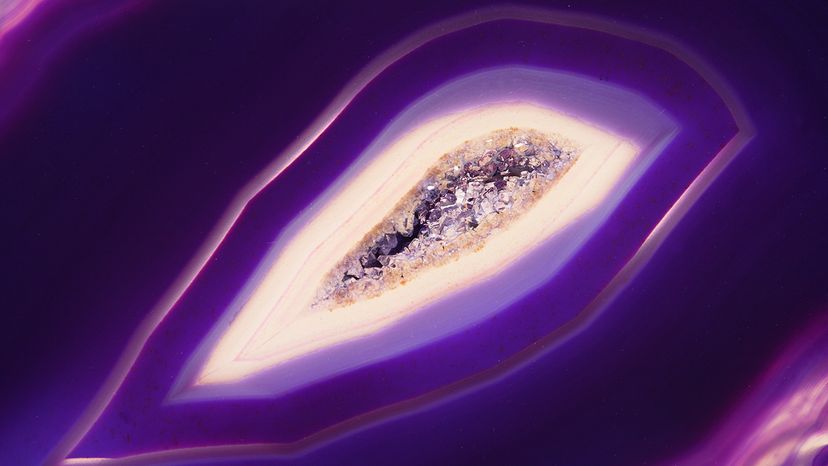
Agates are a form of chalcedony known for their banded appearance and variety of hues. Purple agate features a unique blend of pink, blue, and violet tones, often enhanced by heat treatments or dyeing.
While not a top-shelf gemstone, it’s popular in beaded jewelry and for its supposed healing properties.
7. Purple Tourmaline
Also called Siberite, purple tourmaline ranges from pale lilac to deep violet and sometimes has a reddish or bluish tint. Its natural color is stable, and it ranks around 7 to 7.5 on the Mohs scale. Some pieces may show different colors at different angles, a trait known as pleochroism.
8. Purple Topaz
Purple topaz is often created through treatment, but natural stones do exist and are considered extremely rare. It has a hardness of 8, making it suitable for all types of jewelry. Under different lighting, it can shift between shades of purple and pink.
9. Purple Garnet
Garnets come in many hues, but purple garnets are relatively new to the gem market. They offer a vivid mix of red, purple, and blue tones.
Some purple garnets can exhibit an alexandrite-like color change, appearing grape-purple with flashes of blue and pink in one light and shifting to a cranberry-red hue under another. They’re prized for their beauty and uniform color.
10. Charoite
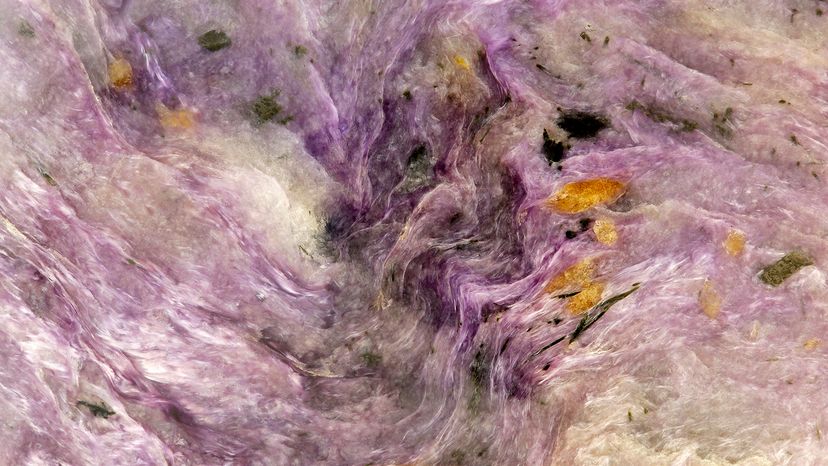
This lesser-known purple gem was first found along the Chara River in Russia. It’s got a swirling, fibrous structure that gives it a granny hair–like texture. Though softer than other purple stones, it’s cherished for its unique appearance and spiritual associations.
We created this article in conjunction with AI technology, then made sure it was fact-checked and edited by a HowStuffWorks editor.


